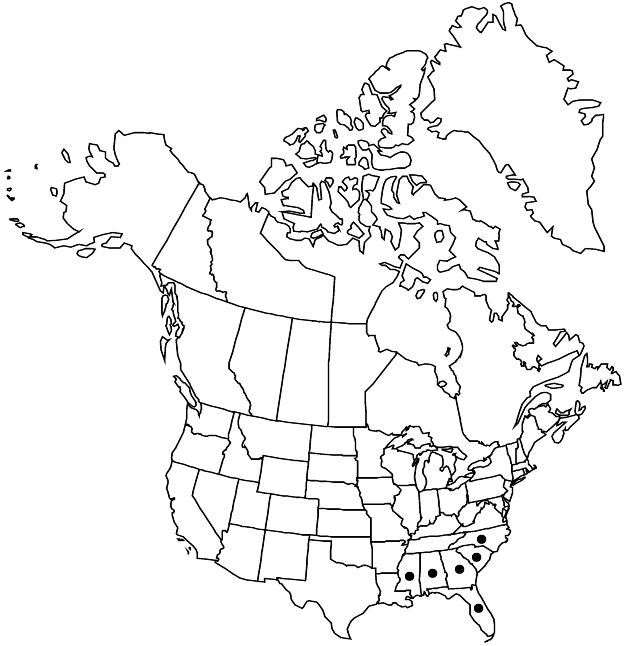Difference between revisions of "Crataegus aestivalis"
Fl. N. Amer. 1: 468. 1840.
FNA>Volume Importer |
imported>Volume Importer |
||
| (4 intermediate revisions by 2 users not shown) | |||
| Line 15: | Line 15: | ||
|name=Mespilus aestivalis | |name=Mespilus aestivalis | ||
|authority=Walter | |authority=Walter | ||
| + | |rank=species | ||
|publication_title=Fl. Carol., | |publication_title=Fl. Carol., | ||
|publication_place=148. 1788 | |publication_place=148. 1788 | ||
| Line 21: | Line 22: | ||
|name=Crataegus cerasoides | |name=Crataegus cerasoides | ||
|authority=Sargent | |authority=Sargent | ||
| + | |rank=species | ||
}} {{Treatment/ID/Synonym | }} {{Treatment/ID/Synonym | ||
|name=C. fruticosa | |name=C. fruticosa | ||
|authority=Sargent | |authority=Sargent | ||
| + | |rank=species | ||
}} {{Treatment/ID/Synonym | }} {{Treatment/ID/Synonym | ||
|name=C. luculenta | |name=C. luculenta | ||
|authority=Sargent | |authority=Sargent | ||
| + | |rank=species | ||
}} {{Treatment/ID/Synonym | }} {{Treatment/ID/Synonym | ||
|name=C. maloides | |name=C. maloides | ||
|authority=Sargent | |authority=Sargent | ||
| + | |rank=species | ||
}} {{Treatment/ID/Synonym | }} {{Treatment/ID/Synonym | ||
|name=C. monantha | |name=C. monantha | ||
|authority=Sargent | |authority=Sargent | ||
| + | |rank=species | ||
}} | }} | ||
|hierarchy=Rosaceae;Rosaceae subfam. Amygdaloideae;Rosaceae tribe Gillenieae;Crataegus;Crataegus sect. Coccineae;Crataegus (sect. Coccineae) ser. Aestivales;Crataegus aestivalis | |hierarchy=Rosaceae;Rosaceae subfam. Amygdaloideae;Rosaceae tribe Gillenieae;Crataegus;Crataegus sect. Coccineae;Crataegus (sect. Coccineae) ser. Aestivales;Crataegus aestivalis | ||
| Line 60: | Line 66: | ||
-->{{#Taxon: | -->{{#Taxon: | ||
name=Crataegus aestivalis | name=Crataegus aestivalis | ||
| − | |||
|authority=(Walter) Torrey & A. Gray | |authority=(Walter) Torrey & A. Gray | ||
|rank=species | |rank=species | ||
| Line 75: | Line 80: | ||
|publication year=1840 | |publication year=1840 | ||
|special status=Endemic | |special status=Endemic | ||
| − | |source xml=https:// | + | |source xml=https://bitbucket.org/aafc-mbb/fna-data-curation/src/2e0870ddd59836b60bcf96646a41e87ea5a5943a/coarse_grained_fna_xml/V9/V9_924.xml |
|subfamily=Rosaceae subfam. Amygdaloideae | |subfamily=Rosaceae subfam. Amygdaloideae | ||
|tribe=Rosaceae tribe Gillenieae | |tribe=Rosaceae tribe Gillenieae | ||
Latest revision as of 23:00, 5 November 2020
Shrubs or trees, 30–120 dm. Stems: twigs: new growth reddish, glabrous, 1-year old dark brown (in late summer); thorns on twigs 1-year old dark, ± shiny, older grayish, 2–4 cm. Leaves: stipules broadly circinate, margins glandular; petiole 3–8 mm, length 10–16% blade, winged distally; blade ± dark green, elliptic to oblanceolate or narrowly so, 3–5 cm (sometimes much larger on extension shoots, then sometimes few-lobed, sometimes deeply so, even almost tripartite), lobes 0, margins entire proximally, serrulate to crenate in distal 1/2, usually eglandular, teeth tips sometimes with black glands, veins 4 or 5 per side, apex acute to subobtuse, abaxial surface glabrous except for tufts of usually pale gray (sometimes ± rufous) hair in lateral vein axils, sometimes also along midvein, adaxial ± shiny, scabrous or glabrous. Inflorescences 2–4-flowered umbels; branches glabrous or sparsely long-pilose; bracteoles narrow, margins sessile-glandular. Flowers 12–30 mm diam.; hypanthium glabrous; sepal margins ± entire, glabrous; anthers pink; styles 4 or 5. Pomes red, sometimes yellow, 8–20 mm diam., shiny; flesh edible; sepals obtuse; pyrenes 4 or 5.
Phenology: Flowering Feb–Mar (later northward); fruiting May–Jul.
Habitat: Seasonally inundated depressions, ditches, sink holes, streamsides
Elevation: 10–100 m
Distribution

Ala., Fla., Ga., Miss., N.C., S.C.
Discussion
Crataegus aestivalis is common in northern Florida and southern Georgia and continues up the coastal plain to New Bern, North Carolina, and west to Mississippi; it is scarce in the northern portion of its range.
Crataegus aestivalis is variable in flower and fruit size. Crataegus maloides has unusually large, and C. luculenta unusually small, flowers; C. cerasoides has large, late-ripening fruit. Crataegus fruticosa is distinguished by late anthesis, at nearly full leaf expansion, and could be mistaken for a form of C. crus-galli. Crataegus monantha is a dwarf form from northern Florida and might prove useful as a dwarfing stock for the mayhaw industry.
Crataegus aestivalis is widely used in the southern states for conserves.
The description of Crataegus aestivalis by Torrey and Gray, together with the distribution they ascribed to it, indicates that they included C. opaca. The type of C. elliptica Pursh (reputedly at BM or OXF) has not been located and that of C. lucida Elliott (at CHARL) has not been accessed; these two names may belong here. C. S. Sargent (1920) thoroughly discussed the typification of C. aestivalis, suggesting that C. elliptica and C. lucida represent the same species.
Selected References
None.